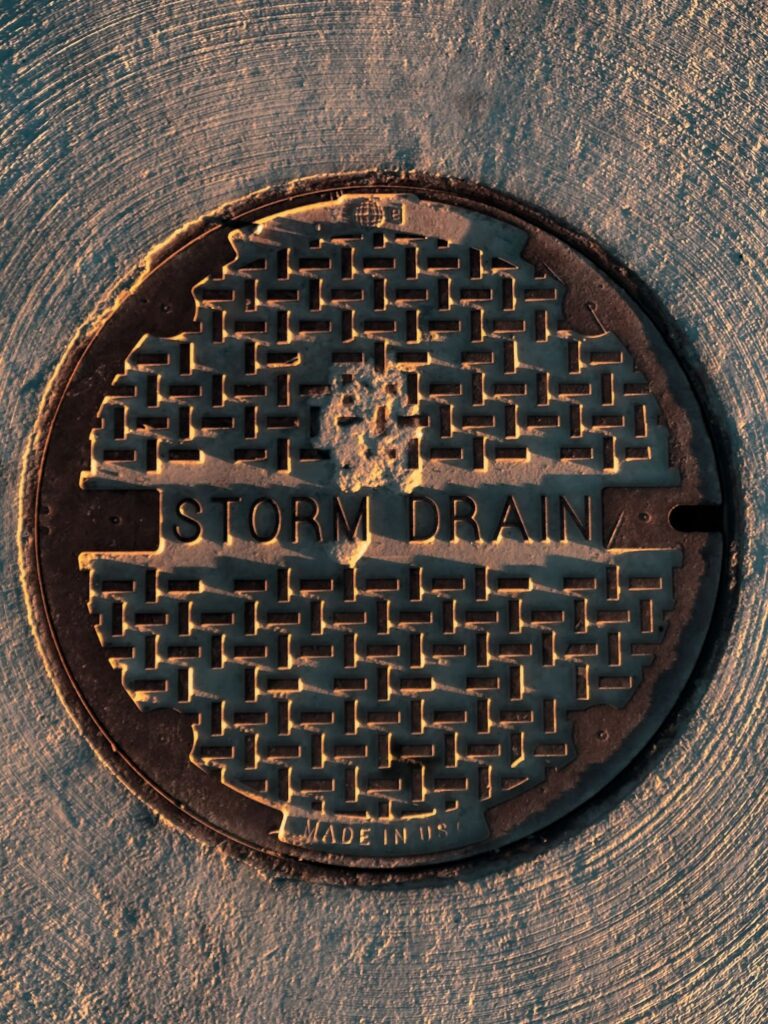What Are Some Options for Storm Drain Protection?

Storm drains are essential to modern infrastructure, and any threat to them poses an extremely high risk of severe consequences.
Picture this. You’ve just finished installing a great storm drain for either a residential or commercial property. It looks great and should do the job perfectly, but the following week rolls around, and the rain comes in. It rains all day and all night. The next morning, you receive an angry call from your client asking why their property and outdoor space is completely flooded, all because you overlooked one thing; storm drain protection.
What Is Storm Drain Protection?
Due to large amounts of stormwater carrying debris, storm drain protection is essential after heavy rain, even with the best storm drain systems. This debris can cause havoc in your drains and block up any given area of a system. Whether it’s the gate itself or internal pipes, the outcome is the same; surface water gathering and flooding.
There are many methods used to protect your storm drains, all of which aim to prevent anything but the water itself from draining away. These solutions can also help curb the effect of excessive water running down a drain at once. If water is flowing at a rate faster than it can be dispersed, you’re going to have similar issues.
There are some excellent storm drain protection solutions available, but what makes a good storm drain in the first place?
Characteristics of The Best Storm Drain
Aside from a storm drain’s components (catch basin, speedy basin, channel drains and flow well), some characteristics separate a poorly designed drain from the best.
Durability
Any storm drain needs to be made durable. Australia experiences its share of wild weather, and things are only going to get worse. Any drainage system needs to be designed with this in mind. The outside of a drain needs to be built using cast iron and reinforced concrete, and the pipes themselves need to withstand the pressures of its environment. For example, to what depth are the pipes and what will be built on top of the system?
Smooth Surfaces
Any flowing water needs to run over a smooth, flat surface to keep obstructions to a minimum. A smooth surface, whether in the pipes or tanks, ensures water flows as quickly and efficiently as possible.
Temperature Resistance
Because of Australia’s varying climates and temperatures, drainage systems need to be incredibly resistant to extreme temperatures. Most notably, heat. With summer days hitting the mid 40’s, most PVC pipes used in storm drainage systems can only withstand temperatures of 60˚c.
So when water sits in a hot, black coloured tank, the temperature can come close or even exceed this, thus causing pipes to crack.
Landscape Match
Any good storm drain should sit naturally with its natural environment. This most basic but often overlooked factor in storm drain design and makes for maximum drainage capability. Excess water should flow into the drain as if it was a natural part of the environment.
If you need any assistance with stormwater and sediment control, don’t hesitate to get in touch with us. We’d love to help.
Popular Storm Drain Protection Strategies
So, what can you do to protect a storm drain? It’s all well and good having the best storm drain available, but if it doesn’t have adequate protection, it becomes almost useless in the event of extreme weather.
Wire Meshing Cover
A thin wire meshing that sits over a drain is a great way to reduce debris flowing through a system and blocking it. You can purchase a wire mesh drain cover for an affordable price and make for a great long term solution.
Sandbags
Sandbags are a good old fashioned temporary drainage protection option commonly used by councils during significant rainfall or by construction to divert runoff from construction sites. Materials such as sand, dirt and earth can cause all sorts of problems in drainage systems, and a simple sandbag can divert and catch such materials.
Silt Bags
Silt bags are another simple but highly effective way to prevent sediment from entering a drain. These bags are placed around the edge of a drain and contain gravel that traps any runoff sediment, allowing only water to run through.
Drain Filters
These are perhaps the most effective form of storm drain protection. Drain filters sit and are held in place by the gate of the drain. Bags or meshing sit underneath the gate and catch any debris from passing through. These filters can catch anything from small sediment to large chunks of rubble, leaves or branches.
Take advantage of our wide range of products if you need to protect a storm drain now.
Weighted Cover
Weighted drain covers are a slightly different method of storm drain protection because they bypass drains altogether. A weighted cover sits on top of the drain and doesn’t allow anything to enter. These covers can be a great solution when expecting abnormally heavy rainfall.
Dewatering Bag
Similar to a drain filter, these bags aim to catch small sediment and filter out everything apart from water. These bags have different flow rates depending on which type you buy and, thus, thoroughly filter out sediments. If water is the only thing you want in your storm drain, this is the option.
Storm Drain Protection
So there we have it. Everything you need to know about the ins and outs of storm drainage. You now know the characteristics that make a great storm drain and some of the best storm drain protection strategies available.
We have some of the best storm drain protection products on the market, so please give us a call if you need a reliable, professional storm drain protection solution. We’d love to assist you. Contact us today.
